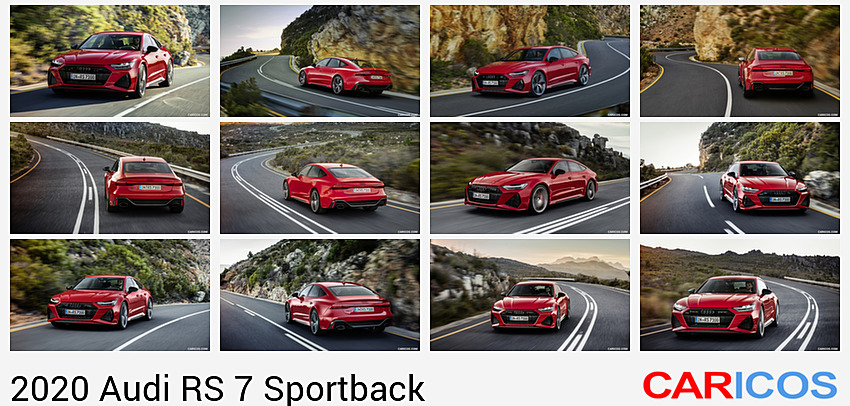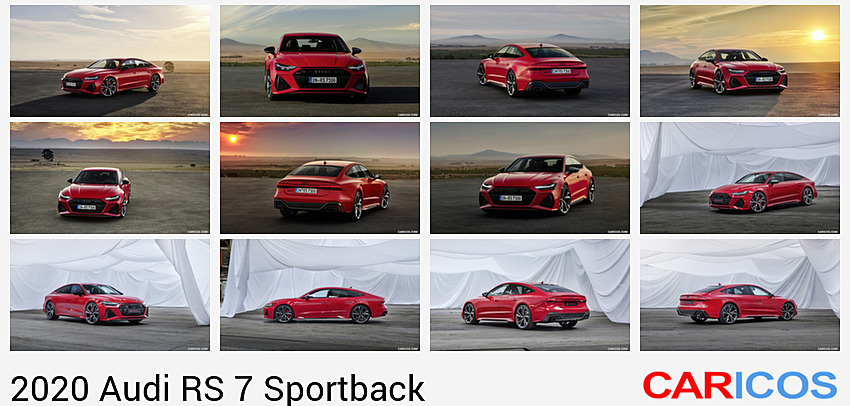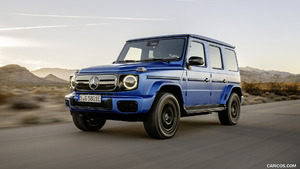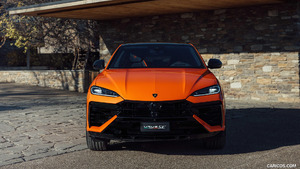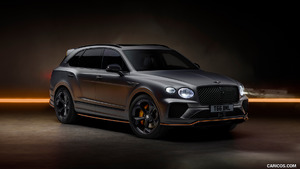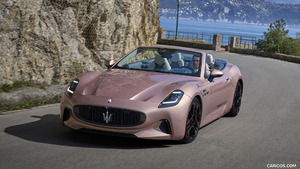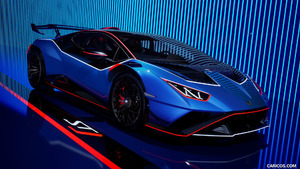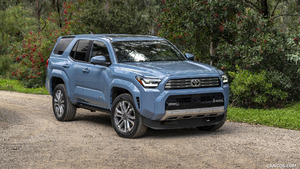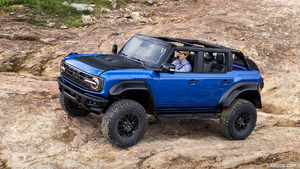2020 RS 7 Sportback
- New high-performance Sportback the first to feature a wide body
- Good-looking and suitable for everyday use: coupé-like grand tourer design
- V8 twin turbo: 4.0 TFSI producing 441 kW (600 metric hp) and 800 Nm (590 lb-ft)
The new Audi RS 7 Sportback (combined fuel consumption in l/100 km: 11.6 – 11.4 (20.3 – 20.6 US mpg); combined CO2 emissions in g/km: 265 – 261 (426.5 – 420.0 g/mi)) marks the model’s second generation and is more unique than ever before. At the International Motor Show (IAA) in Frankfurt, Audi Sport GmbH will be presenting the RS 7 Sportback as a wide-bodied five-seater for the first time, also showcasing the improved performance and efficiency delivered by a mild hybrid system. The RS 7 Sportback will be arriving at dealerships in Germany and other European countries in the end of 2019.
“The RS 7 Sportback is our interpretation of a five-door high-performance coupé with a grand tourer design,” said Oliver Hoffmann, Managing Director of Audi Sport GmbH. “With refinements to make it even more suitable for everyday use plus its incredible performance, what we have here is an outstanding piece of sports equipment for customers who like their cars to feature stunning design.”
Innovative: the exterior design
The new Audi RS 7 Sportback sits low to the ground. The flared wheel arches emphasize the relentlessly sporty nature of the high-performance model from Audi Sport. The extreme width is no optical illusion – at 1,950 millimeters (76.8 inches) at the front fenders, the tape measure has to stretch an extra 40 millimeters (1.6 inches) or so over the Audi A7 Sportback. The new RS 7 Sportback shares the coupé-like lines of the base model’s body, but only in four areas: the hood, the roof, the front doors and the tailgate. The RS-specific exterior design gives the 5,009-millimeter (197.2-inch) grand tourer a character all of its own.
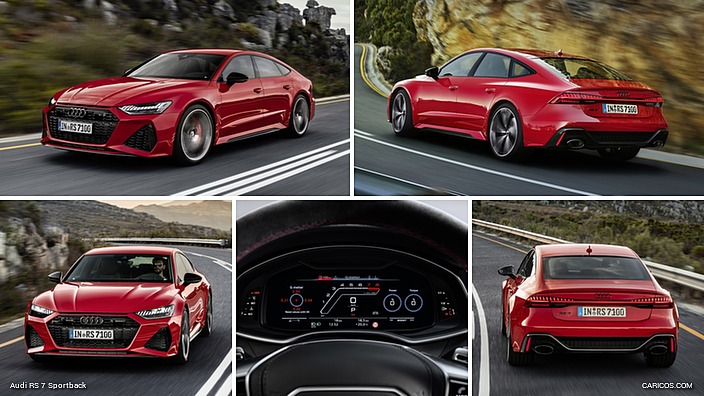 2020 Audi RS 7 Sportback
2020 Audi RS 7 Sportback
The front of the new RS 7 Sportback features a broad, flat Singleframe with no contrasting border. The radiator protective grille with its RS-specific three-dimensional honeycomb structure has retained its gloss black appearance. Large front air inlets and vertical fins in gloss black add to the aggressive styling. A horizontal blade marks a distinctive downward edge to the front end.
The side view of the new Audi RS 7 Sportback (combined fuel consumption in l/100 km: 11.6 – 11.4 (20.3 – 20.6 US mpg); combined CO2 emissions in g/km: 265 – 261 (426.5 – 420.0 g/mi))reveals sharply defined lines and curved surfaces like well-toned muscles. A low shoulder line shifts the visual emphasis downward, while the window line rises toward the rear, giving a sense of dynamism even when the vehicle is stationary. The RS-specific door sills with black inlays accentuate the high-performance Sportback’s distinct impression of forward movement.
The rear end’s curved trailing edge and strip of lights linking the main rear lights make it one of the characteristic defining features of the RS 7 Sportback. At a speed of 100 km/h (62.1 mph), a spoiler will extend from the tailgate. The RS exhaust system, with a large, chrome-colored oval tailpipe on each side, sits beneath an RS-specific bumper with a rear diffuser and design elements in gloss black. The new RS 7 Sportback comes with LED headlights fitted as standard. The optional RS matrix LED laser headlights, with their dark bezels, and the LED rear lights are equipped with dynamic turn signal lights and run through RS-specific sequences when the vehicle is locked and unlocked.
V8 power: the drive system
The 4.0 TFSI in the new Audi RS 7 Sportback produces 441 kW (600 metric hp) and delivers 800 Nm (590 lb-ft) of torque within a broad range from 2,050 to 4,500 rpm. The high-performance Sportback will sprint from 0 to 100 km/h (0 to 62.1 mph) in only 3.6 seconds. The top speed is electronically limited to 250 km/h (155.3 mph); this can be increased to 280 km/h (174 mph) with the Dynamic package and to 305 km/h (189.5 mph) with the Dynamic plus package.
Thanks to its mild hybrid system (MHEV) with a 48-volt main on-board electrical system, the 4.0 TFSI combines maximum performance with high efficiency. The belt alternator starter can recover up to 12 kW power under gentle acceleration and feed it into a lithium-ion battery as electricity. If the driver releases the accelerator at a speed between 55 and 160 km/h (34.2 to 99.4 mph), the drive management will select one of two options. Depending on the driving situation and the settings in Audi drive select, the new RS 7 Sportback will either recover energy or coast with the engine switched off. When the driver steps on the accelerator, the belt alternator starter will start the engine again. MHEV technology allows for start-stop mode at speeds below 22 km/h (13.7 mph). As soon as the vehicle in front of the new RS 7 Sportback starts moving, the engine will spring back to life—even if the brakes are applied. With the MHEV-technology it is possible to reduce fuel consumption by as much as 0.8 liters per 100 kilometers.
The cylinder on demand (COD) system is another weapon in the vehicle’s armory when it comes to efficiency. In higher gears at low to medium loads and engine speeds, it will deactivate cylinders 2, 3, 5, and 8 by halting injection and ignition and closing the intake and exhaust valves. In four-cylinder mode, the operating points will switch to the active cylinders at higher loads, thereby improving efficiency, while the deactivated cylinders continue to run like gas springs, largely without any losses. When the driver presses the accelerator pedal, they are reactivated immediately. Each switchover takes mere milliseconds and is virtually undetectable by the driver and passengers.
The four-liter engine produces a full-bodied and sporty V8 sound. The Audi drive select dynamic handling system allows adjustments to the sonorous growl of the power unit. The optional RS sport exhaust system with black tailpipe trim provides an even fuller sound. In the customizable RS1 and RS2 modes, customers can decide for themselves whether they want a sporty or balanced sound.
The power produced by the 4.0 TFSI flows via the standard eight-speed tiptronic transmission with optimized shift times and a new launch control function to the quattro permanent all-wheel drive system. Drive forces are distributed to the front and rear axles in a 40:60 ratio via the purely mechanical center differential. If one wheel slips, more drive torque automatically goes to the axle with the better traction. Up to 70 percent can flow to the front wheels and up to 85 percent to the back wheels.
The wheel-selective torque control optimizes the agile and confident handling of the new RS 7 Sportback, applying the brakes gently to the wheels on the inside of a bend before they have the chance to slip. The quattro sport differential, available with the optional Dynamic and Dynamic plus packages, shifts the torque between the rear wheels as needed during sporty cornering, thereby improving traction, stability, and dynamics.
Agility as standard: the suspension
Five-link front and rear axles handle the lateral and longitudinal forces independently on the new RS 7 Sportback. The linkages and the subframes are made largely of aluminum. The track is 1,668 millimeters (65.7 in) at the front and 1,650 millimeters (65 in) at the rear.
The standard RS adaptive air suspension with controlled damping has been tuned specifically to suit the RS and now allows the new RS 7 Sportback to reach a top speed of 305 km/h (189.5 mph) thanks to a new air spring module with a spring rate 50% higher. The sport air suspension can be set to three modes and includes automatic level control. In the normal position, the body of the new RS 7 Sportback sits 20 millimeters (0.8 in) lower than an Audi A7 Sportback with standard suspension. At speeds above 120 km/h (74.6 mph), it will drop by a further 10 millimeters (0.4 in) and offer a lift mode enabling the vehicle to be raised by 20 millimeters (0.8 in) if requested. The pronounced kingpin inclination of the RS sport air suspension offers the driver a free choice between long-distance comfort and top performance.
The optional RS sport suspension plus with Dynamic Ride Control (DRC) holds the RS 7 Sportback (combined fuel consumption in l/100 km: 11.6 – 11.4 (20.3 – 20.6 US mpg); combined CO2 emissions in g/km: 265 – 261 (426.5 – 420.0 g/mi))even more tightly to the road and improves handling. Pitching and rolling movements are significantly reduced during spirited driving. A new generation of dampers with integrated valves provides for a distinct spread between the various Audi drive select modes.
Progressive steering with sporty and direct ratios is a standard feature of the new RS 7 Sportback. The sporty grand tourer can optionally be fitted with dynamic all-wheel steering. This combines dynamic steering at the front axle, which uses an infinitely variable strain wave gearing, with a separate rear axle steering system with a spindle drive and track rods. At low speeds, the rear wheels turn as much as five degrees in the opposite direction relative to the front wheels. This reduces the turning circle by as much as one meter (3.3 ft), and the RS 7 Sportback (combined fuel consumption in l/100 km: 11.6 – 11.4 (20.3 – 20.6 US mpg); combined CO2 emissions in g/km: 265 – 261 (426.5 – 420.0 g/mi)) is thus even more agile in city traffic and tight curves. At intermediate and high speeds, the rear wheels turn by as much as two degrees in the same direction, keeping the car steady in its lane.
A driver can determine the character of an RS 7 Sportback using the Audi drive select dynamic handling system. There are six profiles available: comfort, auto, dynamic, efficiency and the customizable RS-specific RS1 and RS2 modes, which can be enabled directly via an RS MODE button on the steering wheel. Audi drive select influences factors including engine and transmission management, steering assistance, the suspension, dynamic all-wheel steering, the quattro sport differential, the exhaust flaps, and the way in which the automatic air conditioning works. In RS2 mode, customers can switch the Electronic Stabilization Control (ESC) to sport mode at the touch of a button.
The new RS 7 Sportback is fitted as standard with 21-inch cast aluminum wheels with a 10-spoke star design and 275/35 tires. Audi Sport offers optional RS-specific wheels with a 22-inch 5-V-spoke design with 285/30 tires in silver, matt titanium look, gloss turned finish, and gloss turned anthracite black finish. The calipers of the RS brake system with internally ventilated and perforated discs (420 millimeters (16.5 in) at the front, 370 millimeters (14.6 in) at the rear) are painted black as standard or red upon request. On the optional RS ceramic brakes, the calipers can be gray, red or blue. The discs measure 440 millimeter (17.3 in) at the front and 370 millimeters (14.6 in) at the rear. The new RS ceramic brake system tips the scales at 34 kilograms (75 lb) less than its steel counterpart, which cuts down on unsprung mass.
Sporty and futuristic: the interior
A stripped-down look with sporty accents are the key stylistic elements in the interior of the new Audi RS 7 Sportback. Much like the exterior design, the design language combines taut, sinewy surfaces with clearly defined contours. There is plenty of space for the driver and passenger, with the architecture of the interior accomplishing a seamless transition to the futuristic user interface. The upper MMI touch response display is embedded in the black-paneled architecture in a way that renders it almost impossible to see where the display ends and the surroundings begin. The driver can use the upper RS monitor display to call up an overview of drive system component temperatures, maximum g-forces and information regarding tire pressures and temperatures.
Special RS displays use the Audi virtual cockpit to provide details of tire pressure, torque, performance, oil temperature, boost pressure, lap times, acceleration, and g-forces. The shift light display prompts the driver to upshift when the rev limit is reached. The optional mild hybrid system (MHEV) also shows some RS-specific information.
The flat-bottomed, fully perforated RS sport leather steering wheel with new large RS aluminum shift paddles features multifunction buttons, which the driver can use to enable the new Audi drive select RS1 and RS2 modes. This automatically opens the RS-specific displays in the Audi virtual cockpit. The RS and RS 7 logos adorn the steering wheel, seats, and illuminated front door sill trims. Logo projectors on the front and rear doors beam the Audi Sport emblem onto the ground when the doors are open.
RS sport seats upholstered with black pearl Nappa leather with a rhombus pattern and RS embossing are fitted as standard. An even sportier option is available in the form of RS sport seats covered with Valcona leather, featuring a honeycomb pattern and RS embossing. The perforation allows a ventilation function for the first time.
The two RS design packages, available in either red or gray, bring a splash of color, with contrasting stitching on the Alcantara steering wheel rim, gear lever gaiter and knee pads. Each package also features seat belt straps with colored edging and RS floor mats. Optional inlays in carbon, natural gray-brown wood or matt aluminum open up a range of possibilities for customizing the interior.
The new RS 7 Sportback (combined fuel consumption in l/100 km: 11.6 – 11.4 (20.3 – 20.6 US mpg); combined CO2 emissions in g/km: 265 – 261 (426.5 – 420.0 g/mi)) offers an array of extra functions not seen in the predecessor model. For the first time, Audi Sport is offering the five-door grand tourer with a three-seater rear bench. The sporty four-seater design with a two-seater rear bench is still available. The luggage compartment offers a base capacity of 535 liters (18.9 cu ft), which can be increased to as much as 1,390 liters (49.1 cu ft) with the split rear seatbacks folded down. The long tailgate opens and closes electrically as standard, with an optional convenience key allowing it to be operated by foot gesture control.
All the best equipment: infotainment, assist systems, colors, and materials
For the new RS 7 Sportback, Audi Sport offers an extensive range of convenience, connectivity, and driver assistance equipment. The athletic grand tourer couples relentless sportiness with unfettered long-distance capability. The car will help the driver out in a wide range of situations. More than 30 assist systems are available, including adaptive cruise assist, intersection assist, lane change warning, curb warning, and 360-degree cameras.
The range of colors for the new Audi RS 7 Sportback encompasses thirteen standard exterior paint finishes, including the two RS-specific shades of Nardo gray and Sebring black, crystal effect, as well as five available matt effect paint finishes. The exterior mirror housings are gloss black as standard, with aluminum matt or the color of the car available as options. Flaps, blades, sill inlays, window slot trims, and the rear diffuser clip can fall under one of three styling packages in matt aluminum, black, or carbon. Upon request, the Audi rings and RS logos at the front and rear are also available in gloss black for the black and carbon styling packages. The diverse Audi exclusive range offers additional possibilities for personalization.

